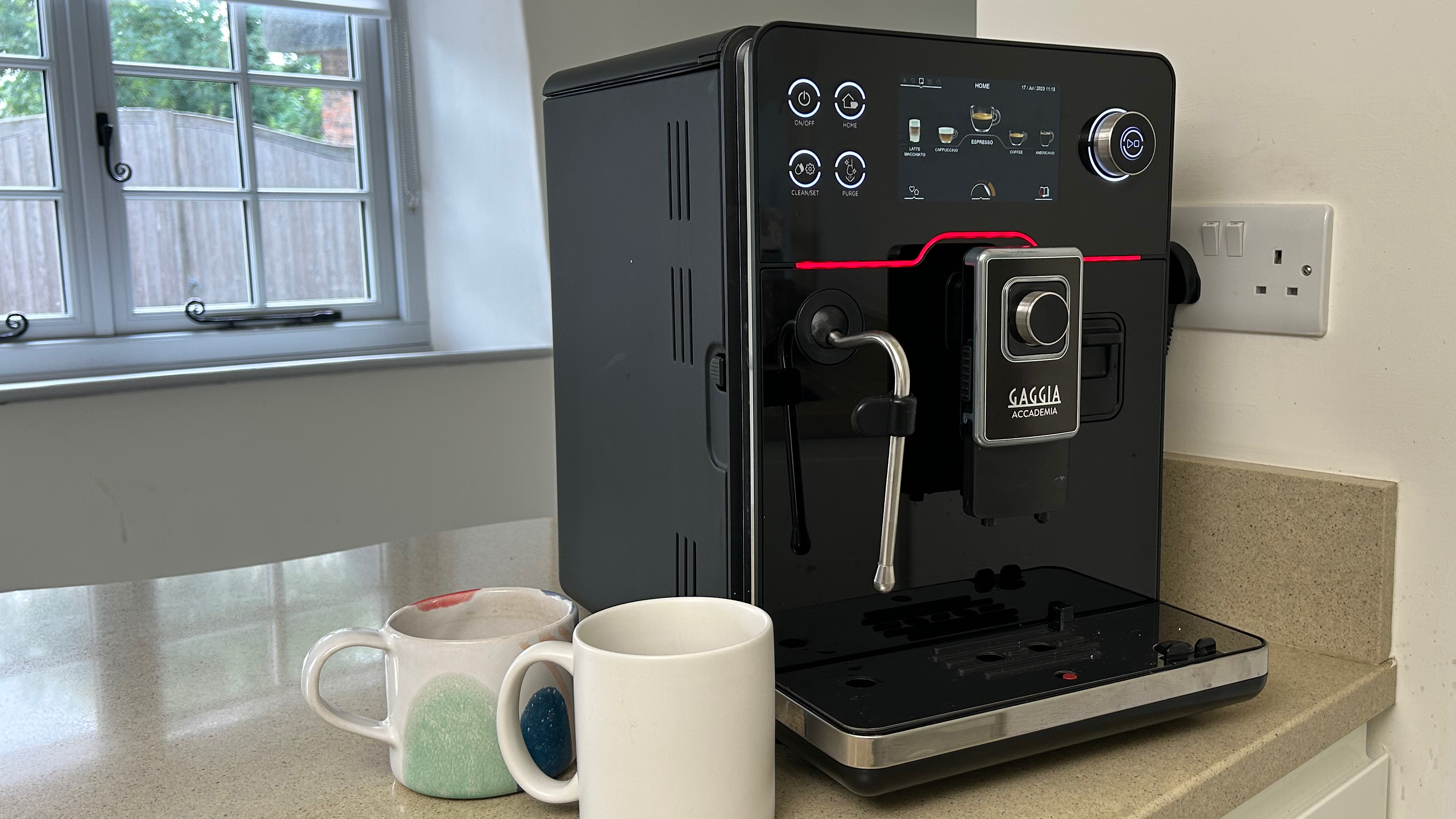
One-minute review
Italian brand Gaggia was founded in 1948 and claims to have invented the espresso process, so it’s a brand you can’t overlook when choosing one of the best espresso machines or indeed one of the best bean-to-cup coffee machines.
The Gaggia Accademia is the newest automatic bean-to-cup machine that the brand is calling its flagship model. It’s a luxury coffee maker that offers an impressive menu of 14 fully customizable coffees as well as several hot water and hot milk functions too.
As a bean-to-cup coffee maker, it grinds whole coffee beans to deliver fresh espresso based coffees. But it can also take pre-ground coffee, which is great news if you like the occasional decaf. It includes a milk wand, in case you want to get involved and play barista, or you can simply hit play and allow it to do all of the work.
The color touch screen makes it incredibly intuitive to use. On test I was impressed by the thick, rich crema on top of the espressos, but the automatic milk frothing left me wanting to do that part myself.
The range of customizable settings does allow you to perfect your coffee recipe without having to learn barista skills. But you'll need plenty of counter space and a big budget if you want this coffee maker in your life.
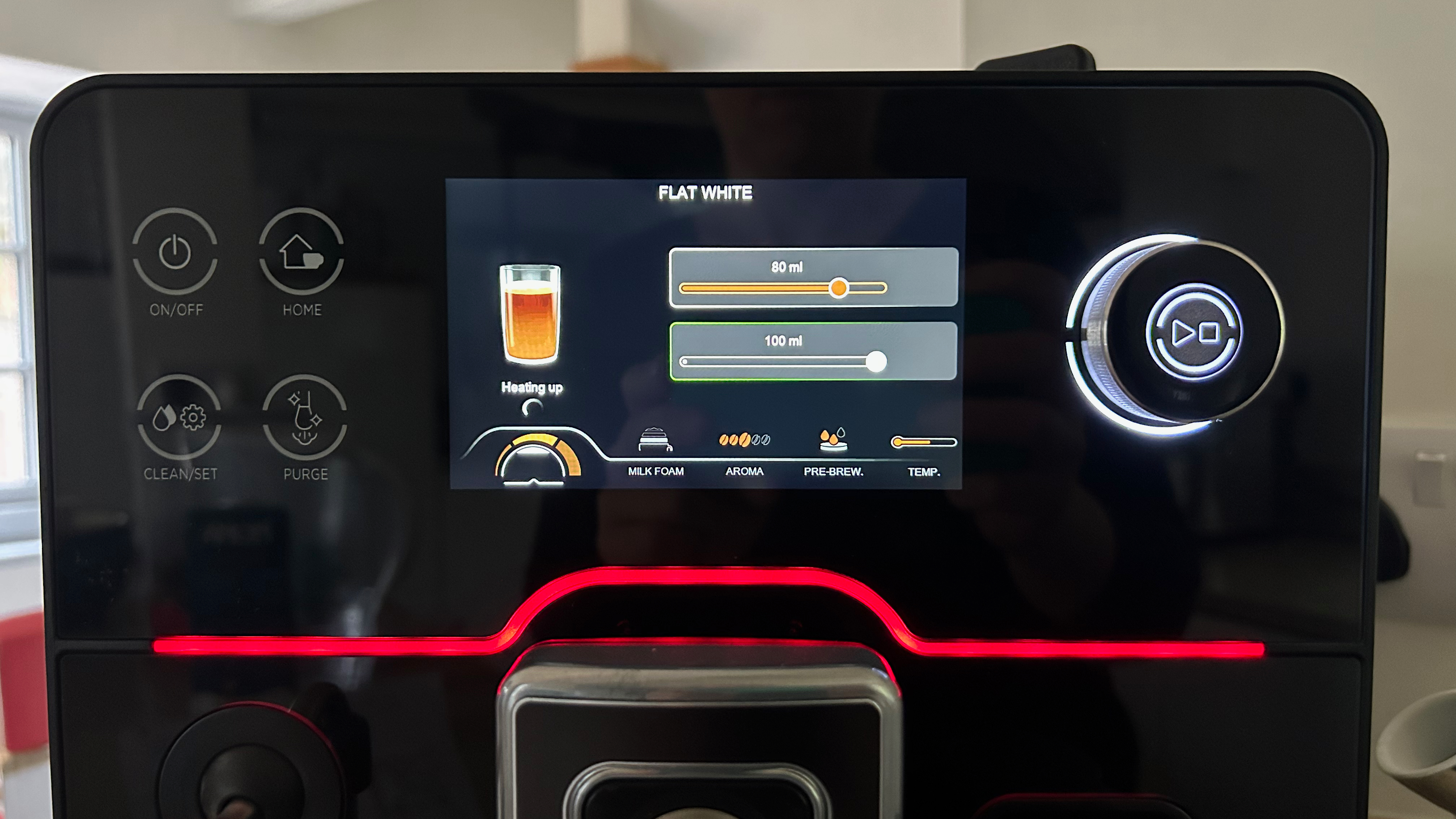
Gaggia Accademia review: price and availability
- List price: $2499/ £1799/ AU$3399
The Gaggia Accademia is an investment level coffee machine that's the most premium Gaggia currently offers. It’s available from a wide range of independent coffee appliance retailers. In the US you can buy it from wholelattelove.com while in the UK, it’s available from coffee-direct.co.uk or you can get it from Amazon in Australia.
It costs in excess of ten times the price of some coffee machines at the budget end of the scale. And while yes, it does come with a whole host of features, it is difficult to justify the price at a time when a lot of people are struggling with a cost of living crisis. That said, if you have a high disposable income and want a premium do-it-all machine, then it might be worth the price tag.
- Value score: 4/5
Gaggia Accademia review: specifications
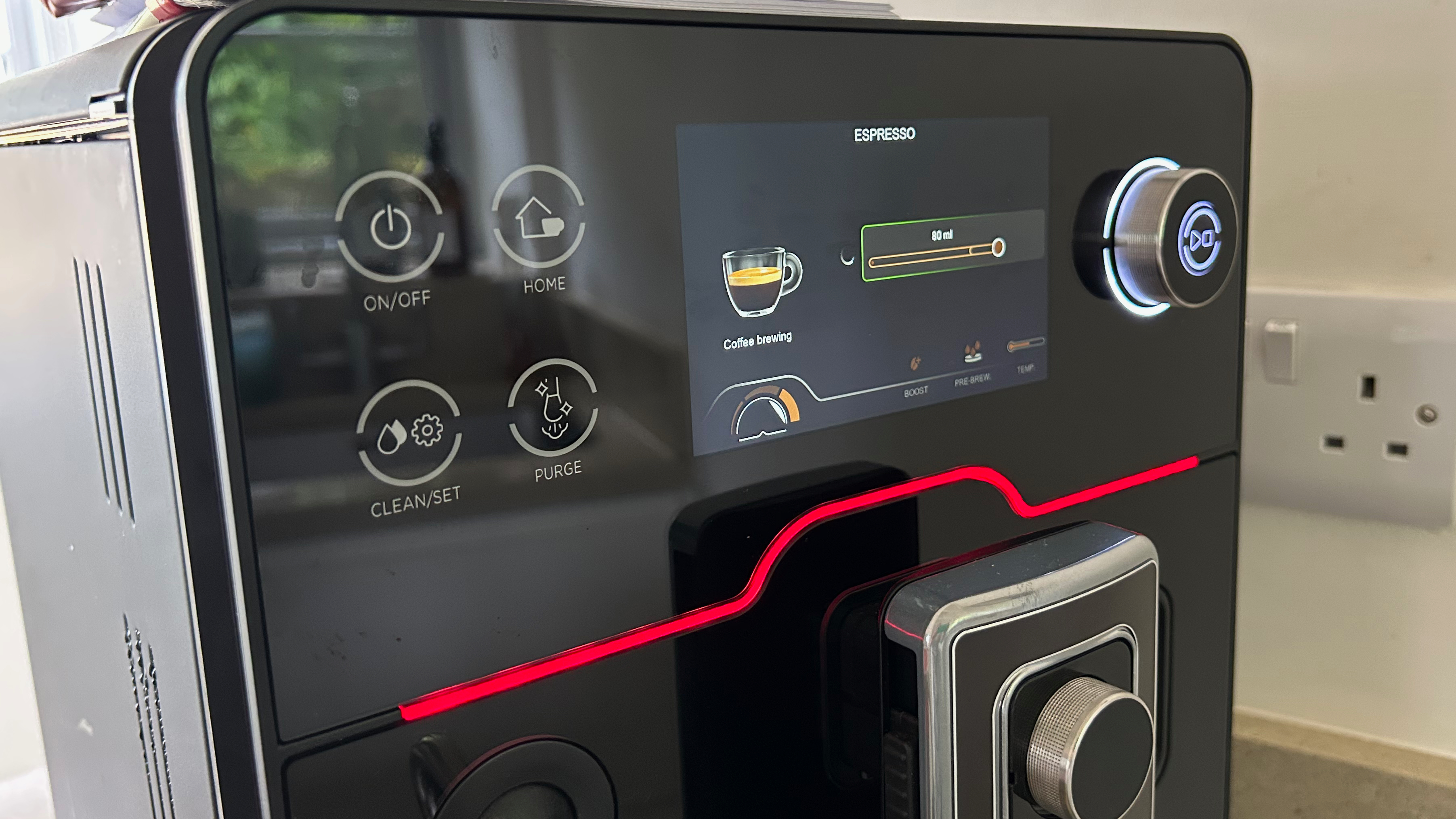
Gaggia Accademia review: design and features
- 5 inch touch sensitive color display
- 19 drinks options
- Customizable temperature, volume and, strength
When I removed it from the box, I was struck by the overall size and bulkiness of this coffee maker. At 15.2 x 11.1 x 16.9 in/ 38.5 x 28.2 x 42.8 cm (h x w x d) it demands a large amount of counter space. And the big black boxy design, while streamlined and minimal, is very dominating. I had the black glass mirrored finish for the review but it also comes in a brushed stainless steel option.
The initial setup wasn’t as complicated as I feared it might be. I simply had to insert the drip tray at the front of the machine and push the coffee dispensing spout into position. I followed the directions in the manual to rinse through the machine and also the milk carafe.
The large color screen will not only alert you to any issues like low water, or a full drip tray, but it displays images to show you how to access the part in question and solve the problem. And these visual instructions are invaluable given how complicated some automatic bean-to-cup machines can be to maintain.
On top of the coffee maker, there are two flip up lids, one on either side. Under the left one is the water container, it’s removable, or you can leave it in place and fill it through the hole on top. On the right is where the coffee beans go. And in the center there's a cup warmer as well as the compartment for pre-ground coffee.
On the front of the machine there's a removable drip tray at the bottom. Above this is the steam wand for texturing your own milk as well as dispensing hot water. To the right, a magnetic cover removes to reveal the slot where you can attach the milk carafe if you want milk dispensed automatically.
Because the milk carafe is removable, you can easily pop it into the fridge between coffees. It’s simple to connect to the coffee machine, and the spout rotates to dispense the milk directly into your cup as it sits below the coffee spout. But the spout height isn’t adjustable, so if you’re using shorter cups, it can be a bit splashy.
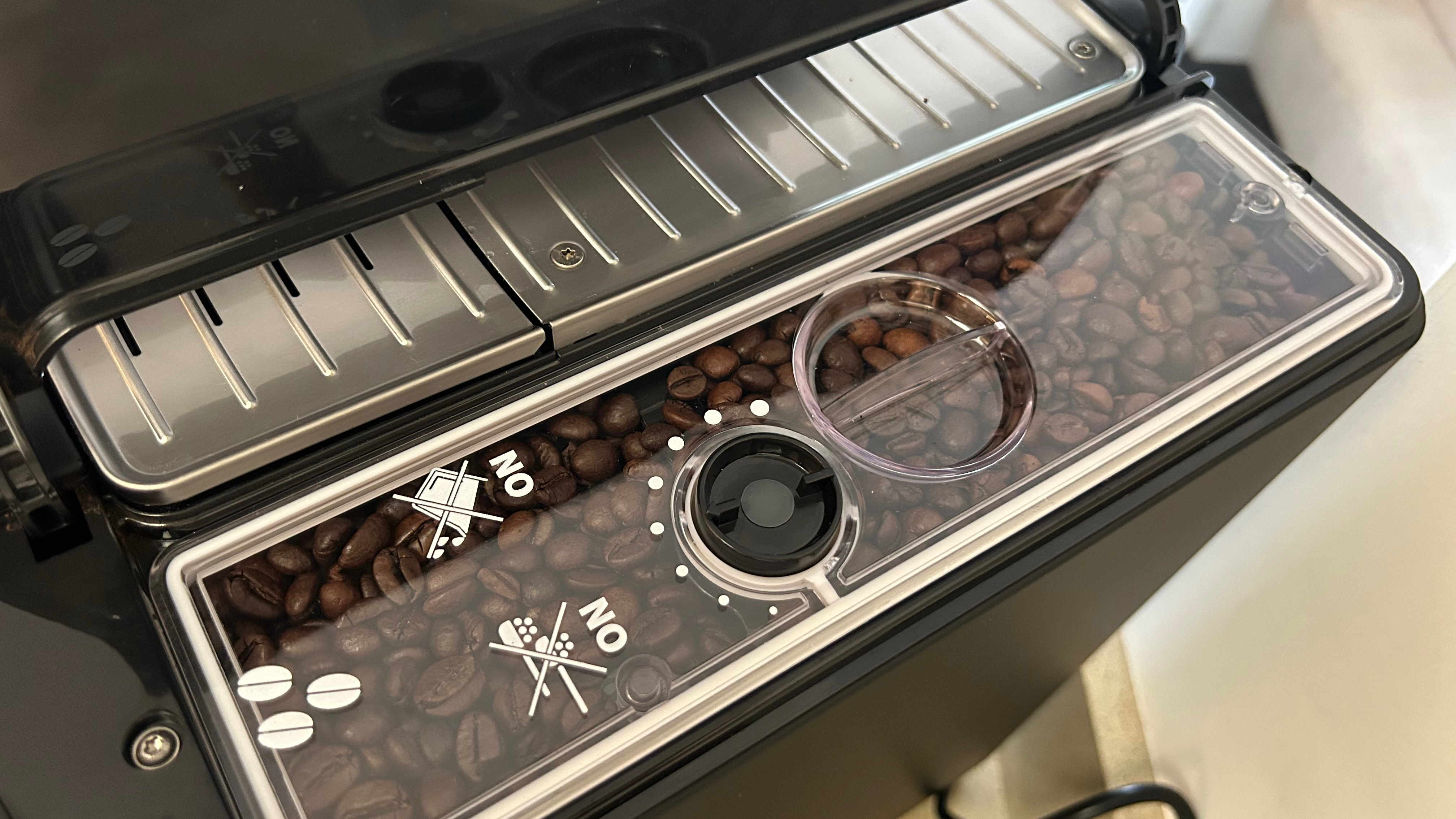
The coffee dispensing spout is in the center and it’s adjustable to allow for different height cups, but there’s only space for cups up to 2.8 inches/ 7cm - 4.3inches/ 11cm tall. Although to make room for tall cups up to 6.3 inches/ 16cm, it can be removed or pushed back.
A knob on the front of the coffee dispensing spout allows you to adjust the body and crema of the espresso. There are three levels to choose from and apart from the knob above the bean hopper to adjust the grind size, it’s the only adjustment you can make that’s not via the touch screen menu.
The whole front panel of the coffee machine is hinged and opens like a door to reveal a second drip tray and the used coffee container as well as a part called the brew group that needs to be removed periodically for cleaning.
The real star of the show is the large color touch sensitive display. It allows you to easily scroll through the menu choices. Then, within each drink setting, you can adjust the volume, temperature, aroma intensity, pre-infusion setting and froth level if it’s a milky drink. The touch screen and simple icons make it very intuitive to adjust and personalize every drink.
Once you’ve figured out your favorite settings, you can save drinks to one of four profiles, so that you don’t have to adjust the settings every time you make a drink. And you can even set a timer to switch on the cup warmer every morning in advance of you coming to make your coffee.
As with all coffee machines, there’s cleaning and maintenance that needs to take place frequently. And there are automated cleaning functions to take care of some of the tasks. But you’ll still have to remove and manually wash out some of the parts by hand - sadly there’s no getting away from this.
- Design score: 4.5/5
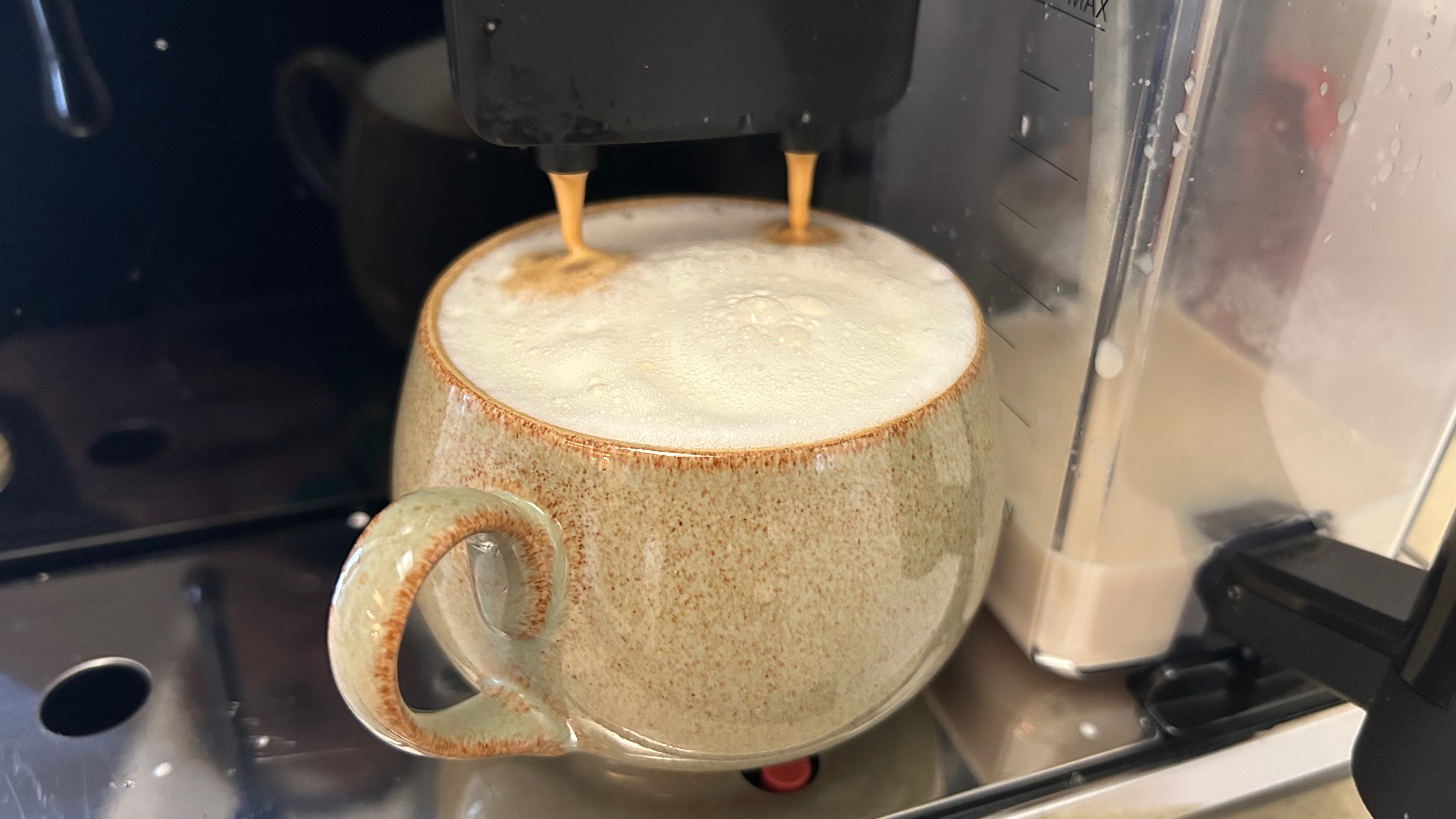
Gaggia Accademia review: performance
- Personalizing drinks is straightforward
- Espresso crema is rich and thick
- Drip tray requires frequent emptying
When first turned on, the coffee machine takes around 55 seconds to heat up and during this process it rinses the coffee spout. Then you can scroll the coffee menu and pick your morning cup of joe.
The time it takes to dispense any coffee will vary when you start adjusting settings to your preferences. And it took me several coffees to get to a point where I was happy with the flavor, volume, aroma, and milk foam level, so my advice is be patient and be prepared to make a few coffees to test out the various settings.
Fortunately, the settings for each individual drink are all so easy to adjust via the touch screen, that it’s not a laborious process, in fact, if you’re super into coffee, it’s quite interesting to see the differences a minor adjustment can make.
The only thing I really struggled with was adjusting the grind size, the knob can only be turned while the machine is grinding beans, so it’s a short window, and I found it really tough to turn, but that may be just the review sample I was sent.
To pour a single espresso on the factory settings, it took 45 - 50 seconds and poured at a temperature of around 155F/ 68C. The temperature was set to the middle of the three temperature options so it can be adjusted up or down to suit your preference.
A double espresso took about 60 seconds, but the average temperature was higher at around 170F/ 77C. The crema can be adjusted via the knob on the front of the spout, I preferred the full body, thick crema setting and it produced a beautifully thick, rich crema, that’s probably the best I’ve seen from an automatic coffee machine.
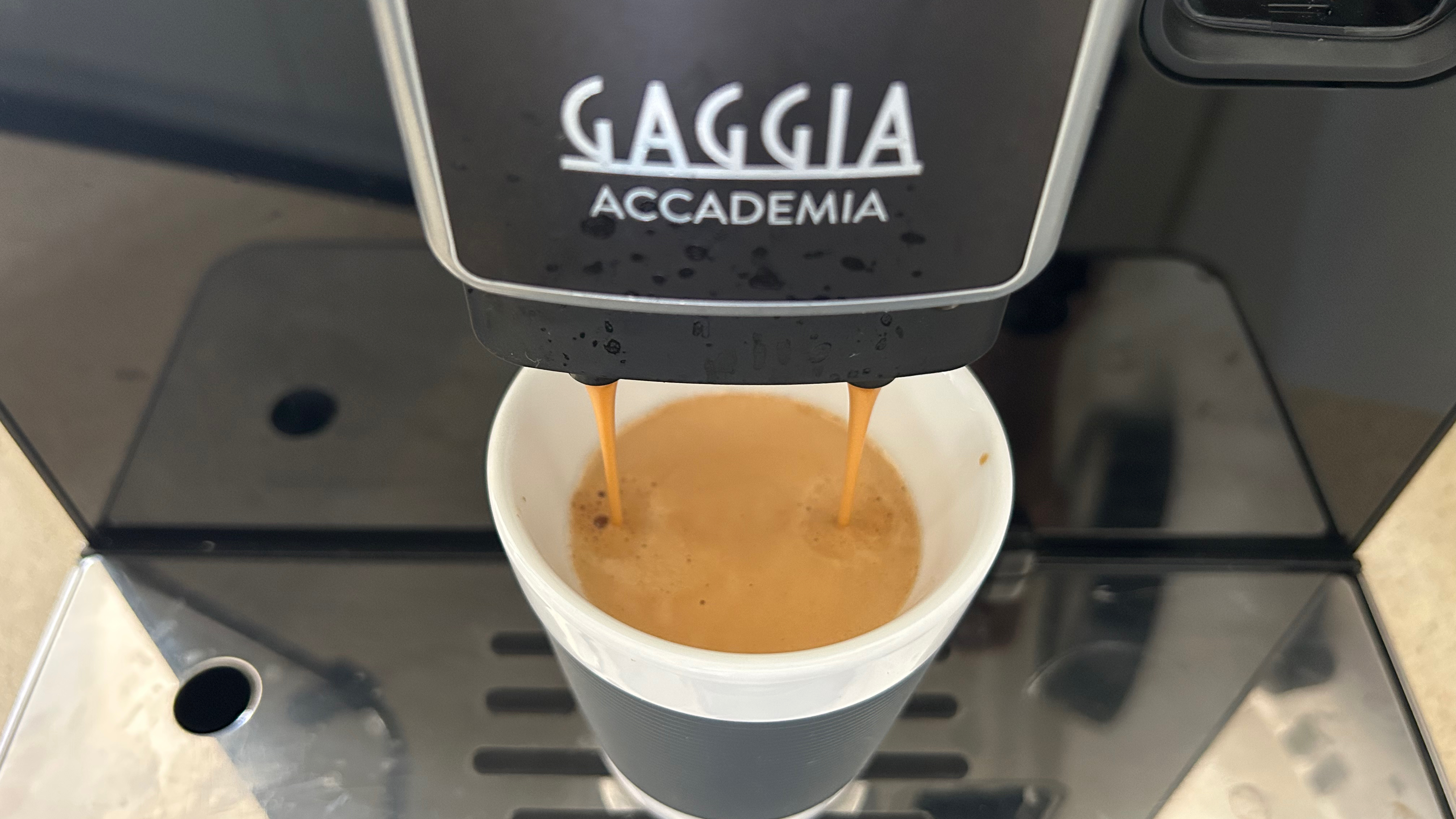
The flavor of the coffee produced was vastly improved when I switched from the Gaggia branded beans supplied in the box, to freshly roasted beans from a local roast house. After I made the switch, the coffee was more nuanced, fruity and much less bitter. And you can of course adjust the aroma via the settings. I tended towards the coffee boost aroma setting. When in this setting, the machine performs a double grinding for a more intense flavor. But it does increase the time it takes to brew the coffee.
The standard cappuccino takes 1 minute 45 seconds to dispense and it’s 135F/57C, so it’s immediately drinkable, but there’s the option to increase the temperature if you prefer. I must admit I found the milk too bubbly, which made it very obvious that it had been dispensed from an automatic milk frother.
When I turned the milk froth level down in the settings it was marginally better, but the reality is that it simply can’t produce a thick silky microfoam like you’ll get from a barista. Personally, I prefer to steam my own milk using the wand and it’s great to have that as an option.
When you choose frothed milk from the menu, you can adjust the froth level and the volume of milk dispensed, but not the temperature. It comes out at an average of 135F/ 57C which is cooler than I’d like for a hot chocolate. And in my opinion the automatic milk dispenser feels a bit clumsy, it often splashes milk droplets outside of the cup, I particularly noticed this when I was using shorter cups like my cappuccino cups. Part of the reason is because a quick steam burst follows the dispensing of milk and this can create mess if you’re not using a tall cup, due to the distance between the milk spout and the cup.
If you fancy the idea of playing barista, the steam wand is really easy to use, but if you haven’t used one before it’ll take some practice to create the perfect milk texture. It’s a shame that the coffee machine doesn’t come with a stainless steel milk jug for use with the steam wand, especially given the premium price point.
To dispense 6.8 fl oz/ 200ml of hot water for black tea takes around 55 seconds and the temperature in the cup averages 170F/ 77C. As a born and bred English person with a tea habit that far exceeds my coffee habit, I would argue that this isn’t hot enough to brew black tea. And unfortunately you can’t adjust the water temperature. I tried the hot water function to see if that was any better, but the temperature was about the same.
Cleaning is simple thanks to the color screen that guides you through every process. But, due to the automatic rinses every time it turns on and off, I felt like it was asking me to empty the drip tray very frequently - it could be as often as every four drinks. And there are various cleaning tasks to do on a weekly and monthly basis, like deep cleaning the milk carafe, cleaning the brew group, and descaling. It’s certainly more involved than the cleaning procedures for a simple espresso machine - but that’s to be expected for such a big automatic coffee maker.
- Performance score: 4.5/5
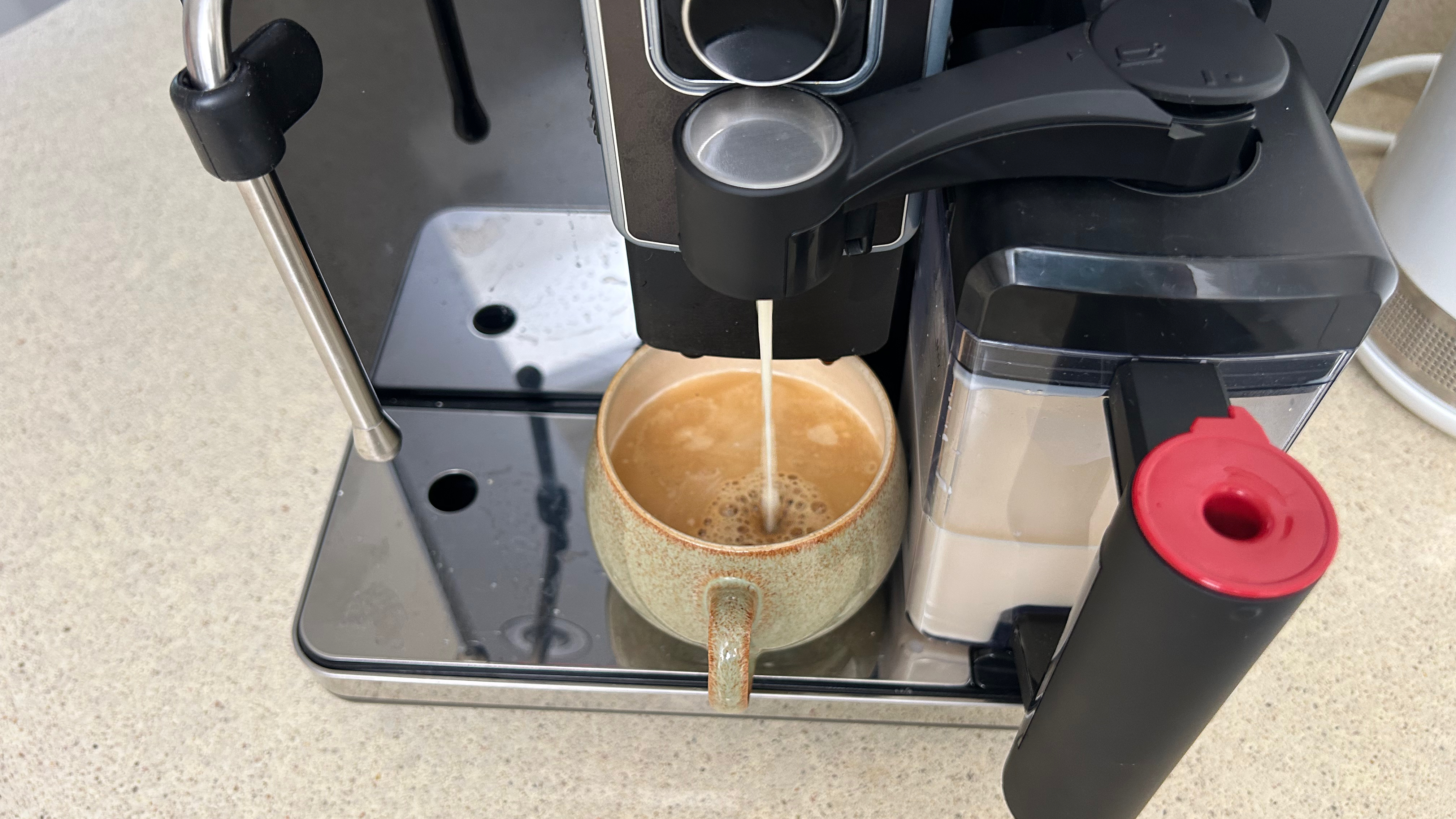
Should I buy the Gaggia Accademia?
Buy it if...
Don’t buy it if...
Also consider...
If you’re not sure about the Gaggia Accademia, here are a couple of other options to consider...
How I tested the Gaggia Accademia
- I tried lots of drinks on the menu
- I frothed milk manually as well as automatically
- I assessed the ease of cleaning
I used the Gaggia Accademia in place of my usual Breville/ Sage espresso machine for around 10 days. I made a minimum of four coffees a day, but also used the hot water to make tea and hot milk function for hot chocolates.
I assessed the flavor of the coffee, general ease of use as well as other important factors like how much maintenance there is and how easy it is to clean.
I’ve reviewed hundreds of coffee machines during my career that began in 2007 at the UK Good Housekeeping Institute. My own personal coffee drinking journey has only really taken off over the last three years, but in that time I’ve become an avid coffee drinker. I haven’t yet mastered latte art, but I’ll get there!
Read more about how we test.
[First reviewed July 2023]







